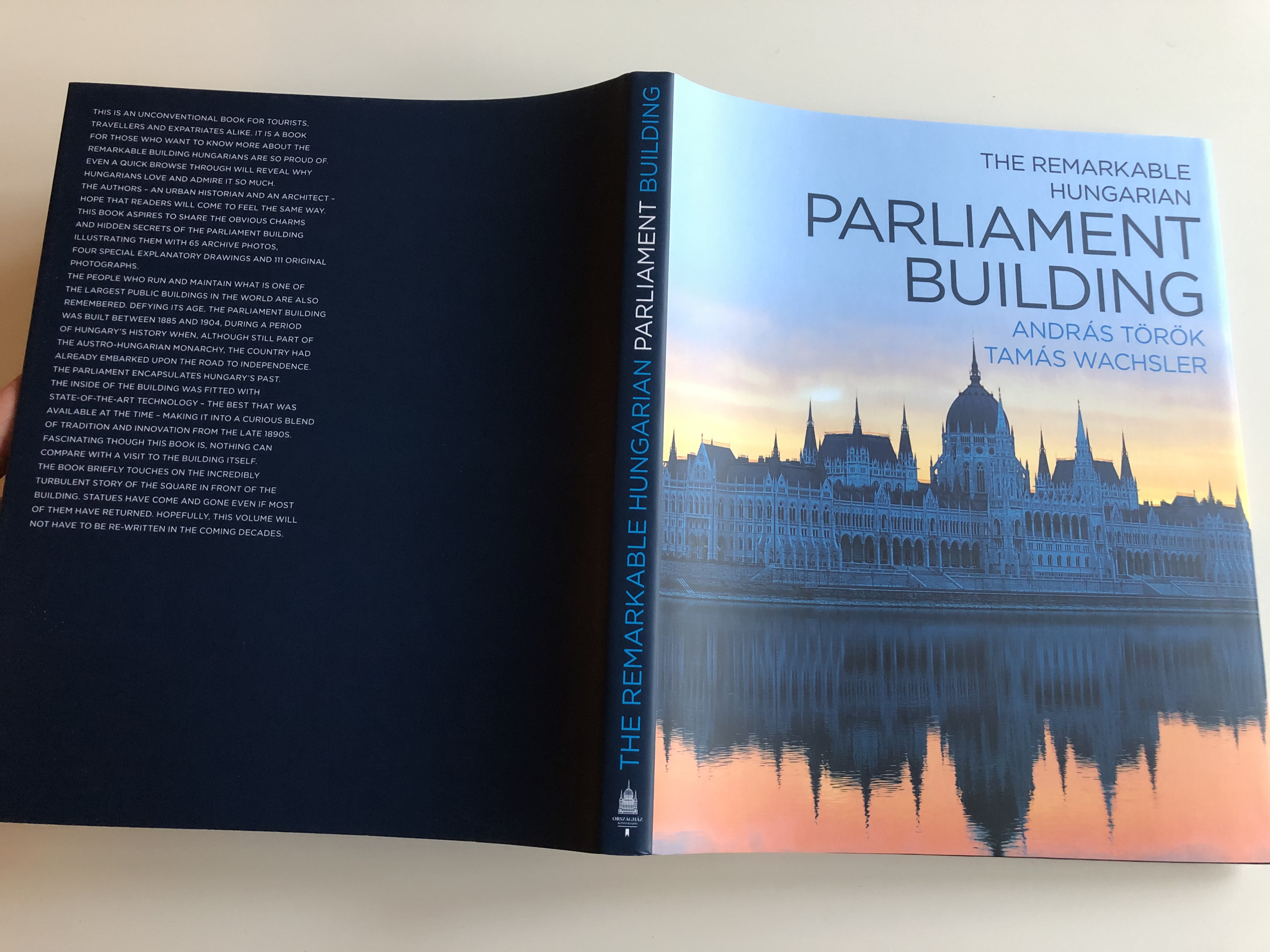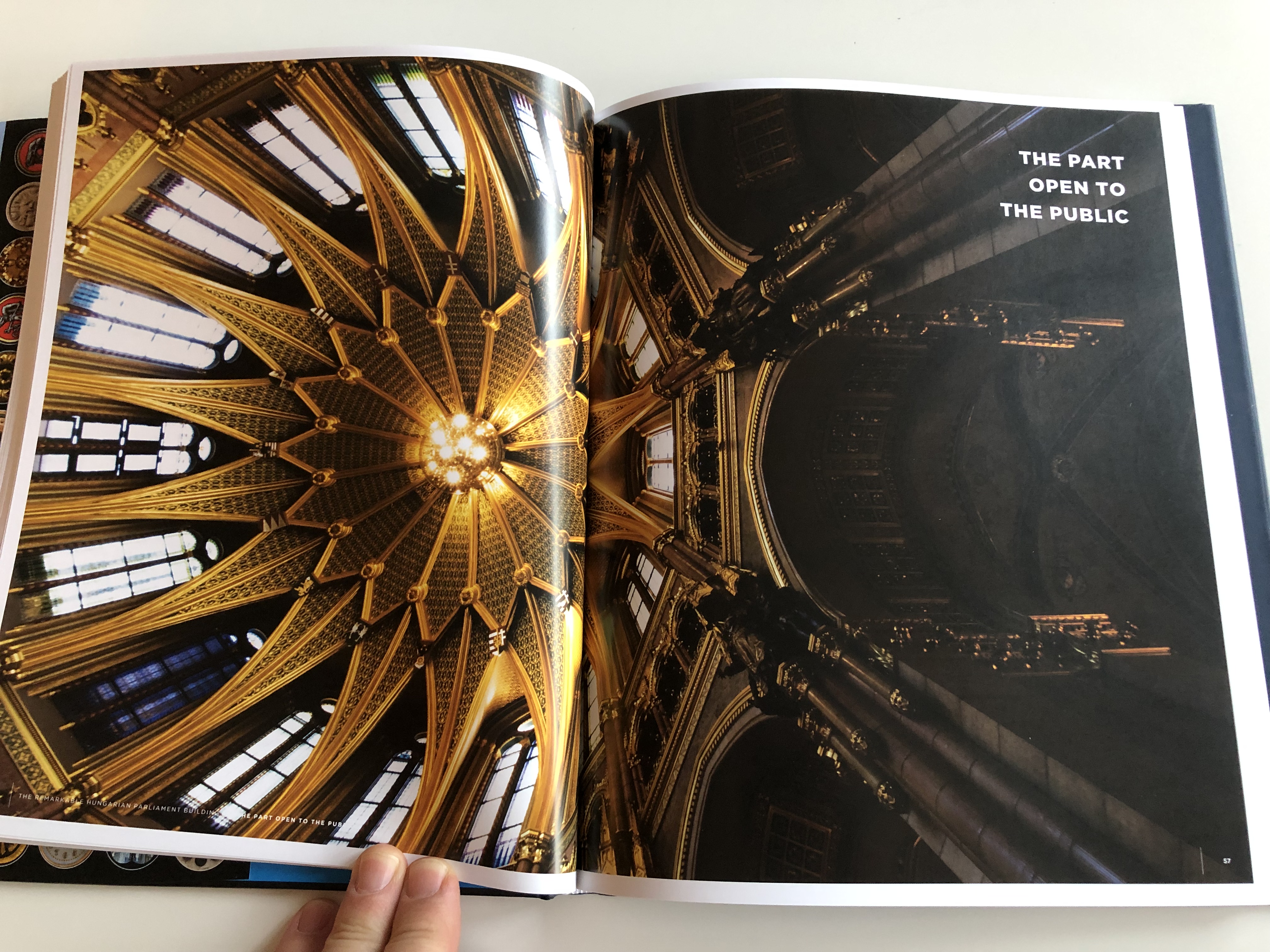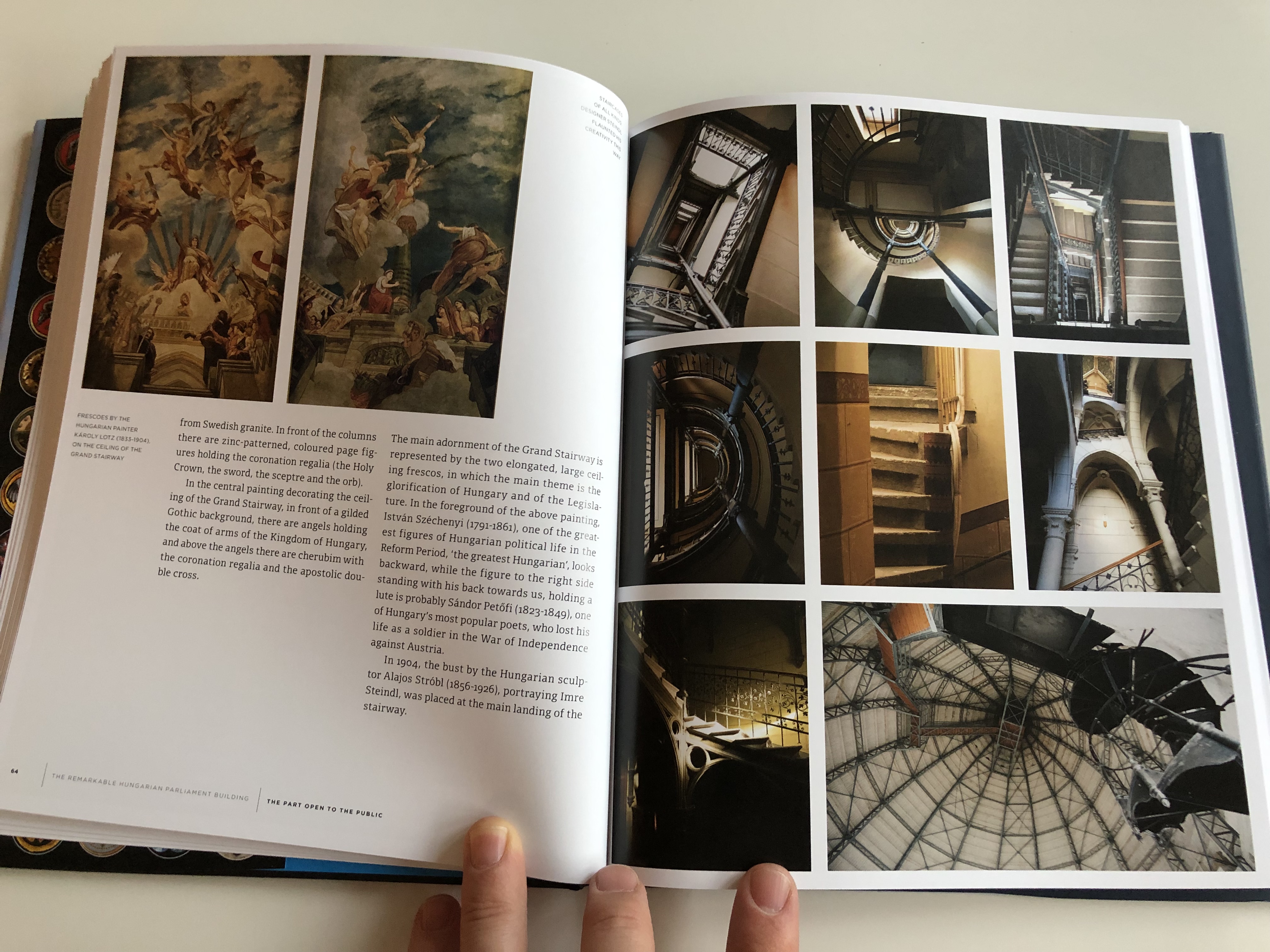Description
The Remarkable Hungarian Parliament Building
Overview / Áttekintés
The Remarkable Hungarian Parliament Building is a beautifully crafted guidebook that explores the rich history, architecture, and significance of one of Hungary's most iconic landmarks. Written by András Török and Tamás Wachsler, the book is a visual and informative journey through the Hungarian Parliament, featuring 65 archival photographs, four special explanatory drawings, and 111 original photographs. It delves into the architectural marvel of the building, from its conception to its intricate details, giving readers a profound understanding of this national treasure.
Az Országház csodálatos épülete egy gyönyörűen elkészített útmutató, amely felfedi Magyarország egyik legismertebb nevezetessége, az Országház gazdag történelmét, építészetét és jelentőségét. Török András és Wachsler Tamás írása a magyar parlamenti épület vizuális és informatív utazása, amely 65 archív fényképet, négy speciális magyarázó rajzot és 111 eredeti fényképet tartalmaz. A könyv részletesen bemutatja az épület építészeti csodáját, annak megálmodásától kezdve a bonyolult részletekig, lehetővé téve az olvasók számára, hogy mélyebb megértést nyerjenek erről a nemzeti kincsről.
Product Features / A Termék Jellemzői
- Format: Hardcover / Kötés: Keménytáblás
- Pages: 152 / Oldalszám: 152
- ISBN: 9786155674006 / ISBN: 9786155674006
- Publisher: Office of the Hungarian National Assembly / Országgyűlés Hivatala
- Published on: February 15, 2017 / Megjelenés: 2017. február 15.
- Size: 215 mm x 20 mm x 265 mm / Méret: 215 mm x 20 mm x 265 mm
- Weight: 852 gr / Súly: 852 gr
- Languages: Hungarian and English / Nyelvek: Magyar és Angol
Key Insights / Fontos Gondolatok
- Architectural Masterpiece: The Hungarian Parliament Building is one of the most beautiful and grandiose structures in Europe. This book offers a comprehensive look at its design, construction, and evolution.
- Historical Significance: A deep dive into the historical and political importance of the building, from its inception in the late 19th century to its present-day role as the seat of the Hungarian National Assembly.
-
Rare Photographs: Includes a collection of 65 archival photos and 111 original photographs, making it a valuable visual resource for those interested in Hungary’s architectural and political history.
-
Építészeti Műremek: A magyar Országház Európa egyik legszebb és legnagyobb épülete. A könyv átfogó képet nyújt annak megtervezéséről, építéséről és fejlődéséről.
- Történelmi Jelentőség: A könyv mélyebben betekintést ad az épület történelmi és politikai fontosságába, a 19. század végén kezdődő építkezéstől kezdve napjainkig, amikor már a Magyar Országgyűlés székhelyeként szolgál.
- Ritka Fényképek: A könyv 65 archív fényképet és 111 eredeti fényképet tartalmaz, amely értékes vizuális forrást kínál azok számára, akik érdeklődnek Magyarország építészeti és politikai történelme iránt.
Interesting Facts / Érdekes Tények
- The Parliament Building’s Construction: The book offers an in-depth look at the building’s construction process, including the work of renowned architect Imre Steindl.
- Architectural Influences: The building is a blend of Neo-Gothic and Renaissance Revival architectural styles, and the guide delves into how these influences shaped the design.
-
Cultural Heritage: The Hungarian Parliament Building is not only an architectural treasure but also a cultural symbol of Hungary’s sovereignty and democratic values.
-
Az Országház Építése: A könyv részletesen bemutatja az épület építkezésének folyamatát, beleértve Steindl Imre híres építész munkáját.
- Építészeti Hatások: Az épület a neogótikus és reneszánsz revivál építészeti stílusok keveréke, és az útmutató bemutatja, hogyan formálták ezek a hatások az épület tervét.
- Kulturális Örökség: A magyar Országgyűlés épülete nemcsak építészeti kincs, hanem Magyarország szuverenitásának és demokratikus értékeinek kulturális szimbóluma is.
Hashtags / Hashtagek
English:
#HungarianParliament #Architecture #HistoricalLandmarks #Hungary #NationalAssembly #BuildingHistory #CulturalHeritage #UniqueLandmarks
Hungarian:
#MagyarOrszágház #Építészet #TörténelmiNevezetességek #Magyarország #Országgyűlés #ÉpületTörténelem #KulturálisÖrökség #EgyedülállóNevezetességek
BOOK INTRODUCTION
Anyone seeing the Hungarian Parliament building for the first time will undoubtedly be amazed. Children are generally are attracted by the building's 'fairytale' character, while adults are fascinated by its sheer scale. This huge, unique, ornate building was designed by Imre Steindl (1839-1902) as a worthy expression of Hungarian statehood.
The capital city of Hungary was established in 1873 with the unification of three settlements - Pest, Buda, and Obuda. The founding fathers' aim was to build a new modern capital city for Hungary that would have few rivals. It was in the intrests of both the developing city and the country to have a large-scale Parliament building constructed.
The last third of the 19th century was a unique period of tranquillity in Hungary's turbulent history. The independence lost centuries before seemed to be within reach again. Under the umbrella of the Habsburg Empire, in the shade of the authority of a long-reining king, Franz Joseph (1848-1916), Hungary underwent significant development. In 1867, the dynasty reached a compromise wit hHungary, which had resisted the Austrians until that time; as a result the Austro-Hungarian Empire was established and lasted until 1918. One part of the confederation was formed by the Austrian Empire, and the other by the Kingdom of Hungary. In 1892, Budapest gained the status of capital city, alongside Vienna.
There are several buildings in Budapest that look much older than their actual age. All of these buildings - the Basilica, Matthias Church, the Fisherman's Bastion, the old Royal Palace, and Vajdahunyad Castle in the City Park (Varosliget) - were built in a unique golden era, when a city was built that filled even the poorest inhabitants of the city with pride. Hungary's capital city attempted to compensate for the grand buildings destroyed or never built during its glorious and difficult history - if you will, its own Notre-Dame, St. Peter's Basilica and Hradcany. The Parliament building is an esteemed 'imprint' of this effort.
The building was constructed for what was then the bicameral Parliament of a much larger country than modern-day Hungary. Its huge presence provided a comforting sight for the residents of Hungary, a nation that lost World War I, with the country reduced to a third of its size following the Treaty of Trianon (1920). From 1945 the National Assembly became unicameral, and as Parliament reduced in size, other high public offices moved to the Parliament building. In 1950, during the Communist dictatorship, an illuminated red star was removed from the building. The change in the political system brought freedom and independence for the country, and the Parliament building was again used in accordance with its original purpose from then on. The love and admiration of Hungarians for the Hungarian Parliament building has remained undiminished over the yaers, free from the influence of historical feuds of daily politics.
























































































